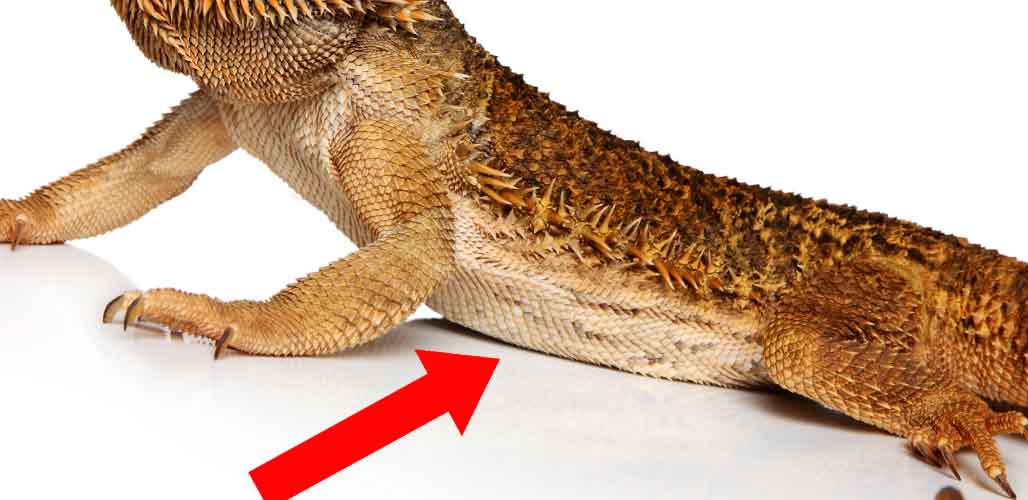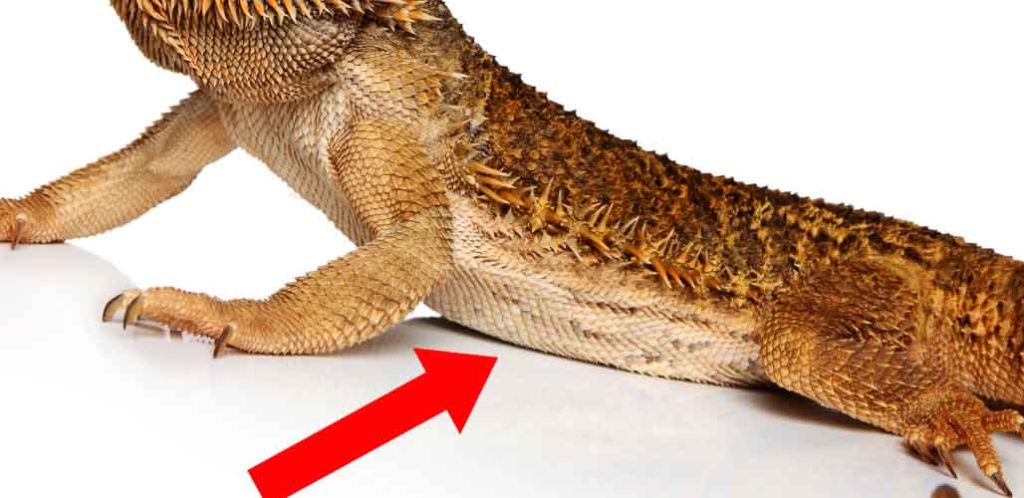Are you a proud owner of a bearded dragon? Have you ever noticed tiny dots or lines on your pet’s skin and wondered what they are? Well, those marks are called stress marks, and they are a common occurrence in bearded dragons.
Stress marks are temporary markings that appear on the skin of a bearded dragon when they are stressed or uncomfortable. They can range from small dots to long lines, and their intensity and location can vary depending on the level of stress the bearded dragon is experiencing. In this article, we will explore what causes stress marks on bearded dragons, how to identify them, and what you can do to help your pet feel more comfortable.
Stress marks on a bearded dragon are dark lines that appear on their underside. These marks are a response to stress and can be caused by a variety of factors, including improper lighting, incorrect temperatures, lack of hiding spots, and insufficient food or water. Bearded dragons may also display stress marks during mating season or when being handled improperly. It’s important to address the root cause of your bearded dragon’s stress to ensure their health and well-being.

What Are Stress Marks on a Bearded Dragon?
If you are a bearded dragon owner, you may have noticed stress marks on your pet’s body. These marks can be concerning, and you may be wondering what they are and what causes them. In this article, we will discuss stress marks on bearded dragons and what they mean.
What are Stress Marks?
Stress marks are dark lines or patches that appear on a bearded dragon’s body. These marks can occur on the underside of the dragon’s body, on the legs, or around the eyes. They are called stress marks because they are a sign that the dragon is experiencing stress.
Stress marks can vary in intensity and appearance. They may be faint or dark, and they may be long or short. The marks may also be accompanied by other signs of stress, such as lethargy or loss of appetite.
There are several factors that can cause stress marks in bearded dragons. Let’s take a look at some of the most common causes.
Causes of Stress Marks in Bearded Dragons
1. Inadequate Habitat – Bearded dragons require a specific type of environment to thrive. If their habitat is too small, too hot, or too cold, they can become stressed. Make sure your dragon’s habitat is the right size and temperature for them.
2. Improper Diet – Bearded dragons require a balanced diet of insects and vegetables. If their diet is lacking in any way, they can become stressed. Make sure your dragon is getting the proper nutrients they need.
3. Handling – Bearded dragons do not like to be handled too much. If they are handled too frequently or roughly, they can become stressed. Limit handling to short periods of time and be gentle.
4. Illness – If your bearded dragon is sick, they can become stressed. Make sure to take your dragon to a veterinarian if you notice any signs of illness.
Benefits of Addressing Stress Marks in Bearded Dragons
Stress marks can be a sign that your bearded dragon is not thriving. Addressing the underlying causes of stress can help your dragon be happier and healthier. Some benefits of addressing stress in bearded dragons include:
– Improved appetite
– Increased activity
– Better overall health
– More vibrant coloration
Stress Marks vs. Other Markings
It is important to note that not all marks on a bearded dragon’s body are stress marks. Bearded dragons can have natural markings and patterns that are not a cause for concern. Some common markings include:
– Basking Marks – These are light markings that appear on a dragon’s belly after they have been basking in the sun or under a heat lamp.
– Shedding Marks – These are patches of skin that are about to shed. They are usually lighter in color than stress marks.
– Pattern Marks – These are natural markings and patterns that bearded dragons have.
If you are unsure about whether your bearded dragon’s markings are stress marks or not, consult with a veterinarian.
Conclusion
Stress marks on bearded dragons can be a sign that something is wrong. It is important to address the underlying causes of stress to help your dragon be happier and healthier. By providing the right habitat, diet, and handling, you can help your bearded dragon thrive. If you are concerned about stress marks on your dragon, consult with a veterinarian.
Frequently Asked Questions
Bearded dragons are popular pets known for their friendly personalities and unique appearance. However, like any animal, they can experience health issues that owners should be aware of. One common concern among bearded dragon owners is stress marks. Here are some frequently asked questions about stress marks on bearded dragons.
What are stress marks on a bearded dragon?
Stress marks, also known as anxiety marks, are dark markings that appear on a bearded dragon’s underside. They can start at the base of the tail and extend up to the armpits. These marks can be a sign of stress or anxiety in your bearded dragon.
When a bearded dragon feels threatened or uncomfortable, its body will produce a hormone called melanin. This hormone causes the skin to darken, resulting in stress marks.
What causes stress marks on a bearded dragon?
There are several factors that can cause stress marks on a bearded dragon. One common cause is improper housing. Bearded dragons need a spacious and comfortable environment to thrive. If their enclosure is too small or lacks the proper temperature and lighting, they may become stressed and develop stress marks.
Other factors that can cause stress marks include handling your beardie too much, loud noises or sudden movements, and changes in their diet or environment. It’s important to pay attention to your bearded dragon’s behavior and surroundings to identify potential stressors.
Are stress marks harmful to a bearded dragon’s health?
While stress marks themselves are not harmful, they can be a sign of underlying health issues. If your bearded dragon is experiencing chronic stress, it can lead to a weakened immune system and other health problems. It’s important to identify and address the cause of your bearded dragon’s stress to ensure their overall health and well-being.
Additionally, if you notice any other concerning symptoms or changes in your bearded dragon’s behavior, it’s best to seek advice from a veterinarian who specializes in reptiles.
How can I reduce stress in my bearded dragon?
There are several ways to reduce stress in your bearded dragon. One of the most important steps is to provide a spacious and comfortable enclosure with the proper temperature and lighting. You should also avoid handling your bearded dragon too much and minimize loud noises or sudden movements around them.
Other ways to reduce stress include providing hiding spots in their enclosure, maintaining a consistent feeding schedule, and avoiding sudden changes to their environment. If your bearded dragon is still experiencing stress despite these efforts, it’s best to consult with a veterinarian who specializes in reptiles.
Can stress marks be prevented?
While it’s not always possible to prevent stress marks entirely, there are steps you can take to minimize your bearded dragon’s stress levels. Providing a spacious and comfortable enclosure with the proper temperature and lighting is essential. You should also avoid handling your bearded dragon too much and minimize loud noises or sudden movements around them.
It’s also important to pay attention to your bearded dragon’s behavior and surroundings to identify potential stressors. By taking proactive steps to minimize stress, you can help ensure your bearded dragon’s overall health and well-being.
Full Guide on Bearded Dragon Stress Marks | GrimDragons.com
In conclusion, stress marks on a bearded dragon can be indicators of various underlying issues. It is important to recognize and address these stress marks as soon as possible to ensure the health and well-being of your pet.
With proper care and attention, stress marks can be avoided altogether. Providing a comfortable and stress-free environment for your bearded dragon, along with a balanced diet and regular veterinary check-ups, can go a long way in preventing stress marks and keeping your pet healthy and happy.
In summary, being an attentive and responsible pet owner means recognizing the signs of stress in your bearded dragon and taking the necessary steps to address them. By doing so, you can help ensure a long and happy life for your beloved pet.


